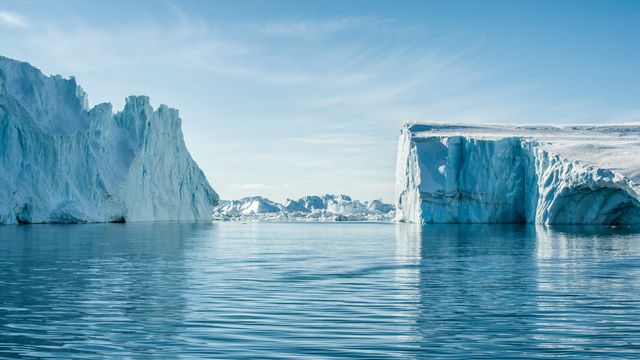Thank you. Listen to this article using the player above. ✖
Want to listen to this article for FREE?
Complete the form below to unlock access to ALL audio articles.
Iceberg calving is the process when huge chunks of ice break off from glaciers and crash into the sea. This process is a key factor in the current rapid mass loss of the Greenland ice sheet. Using fiber optic technology, an international research team led by the University of Zurich (UZH) and the University of Washington (UW), USA, was able to measure for the first time that the impact of the breaking-off chunks of ice into the sea and their subsequent drifting away increases mixing with the warm water in the depths.
“This increases seawater-induced melt erosion and undermines the vertical ice wall at the end of the glacier. This further intensifies iceberg calving and the associated mass loss of ice sheets,” says co-author Andreas Vieli, a professor at the UZH Institute of Geography. Vieli leads the Cryosphere Cluster, one of six clusters of the interdisciplinary GreenFjord project in South Greenland, funded by the Swiss Polar Institute. The new insights into the processes between glacial ice and seawater are the cover story of the latest issue of Nature.
Fiber optic cable on the seabed measures wave movements
As part of the GreenFjord project, UZH and UW, together with other Swiss institutions, conducted a comprehensive field study on calving dynamics: At the Eqalorutsit Kangilliit Sermiat glacier in southern Greenland, researchers laid a 10 km long fiber optic cable on the seafloor along the glacier front. This large, fast-flowing glacier delivers around 3.6 km³ of ice to the sea every year—about three times the volume of the Rhône Glacier near the Furka Pass.
Distributed Acoustic Sensing is the name of the technology used to measure disturbances along the length of the fiber optic cable caused by cracks in the ice, falling ice, ocean waves, or temperature fluctuations. “With this methodology, we can measure many different types of waves immediately after an iceberg breaks off,” says lead author Dominik Gräff, a postdoc at the University of Washington and affiliated with ETH Zurich.
Underwater waves increase glacier melt and erosion
After the initial impact with the water, surface waves—so-called calving-induced tsunamis—splash through the fjord, initially stirring up the uppermost layers of water. Because the seawater in the Greenland fjords is warmer and heavier than the glacial meltwater, it settles to the bottom.
Long after the impact, after the surface had already settled, the researchers observed other waves spreading underwater between the density layers. These waves, which can be higher than a skyscraper, are not visible at the surface, but they further mix the water column and thus bring more heat energy to the ice wall. This, in turn, increases melting and erosion on the vertical ice wall standing in the water and makes it easier for icebergs to break off above it. “With the fiber optic cable, we were able to measure this incredible multiplier effect on iceberg calving. This was previously impossible,” says Gräff. The collected data will help to more accurately document the process of iceberg calving and better understand the accelerated loss of these ice sheets.
Greenland ice sheet is a fragile and threatened system
Scientists have long known that the interaction between ocean water and glaciers calving into the sea is important. However, it is very difficult to measure the processes involved directly on site; the fjords are littered with icebergs, and falling chunks of ice are a constant threat. Furthermore, conventional satellite-based remote sensing methods do not see below the water surface, where glaciers and ocean water interact. “With previous measurements, we have often only scratched the surface. A new, innovative approach was therefore needed,” says Andreas Vieli.
The Greenland ice sheet is a gigantic ice cap, roughly 40 times the size of Switzerland. If this mass of ice were to melt completely, global sea levels would rise by about seven meters. The large amounts of meltwater associated with the melting of the glaciers can weaken ocean currents like the Gulf Stream, with far-reaching consequences for the climate in Europe. Furthermore, the retreat of these calving glaciers also impacts the local ecosystem of the Greenland fjords. “Our entire Earth system depends at least partially on these ice sheets. It’s a fragile system that could collapse due to excessively high temperatures,” warns Dominik Gräff.
Reference: Gräff D, Lipovsky BP, Vieli A, et al. Calving-driven fjord dynamics resolved by seafloor fibre sensing. Nat. 2025. doi:10.1038/s41586-025-09347-7
This article has been republished from the following materials. Note: material may have been edited for length and content. For further information, please contact the cited source. Our press release publishing policy can be accessed here.
